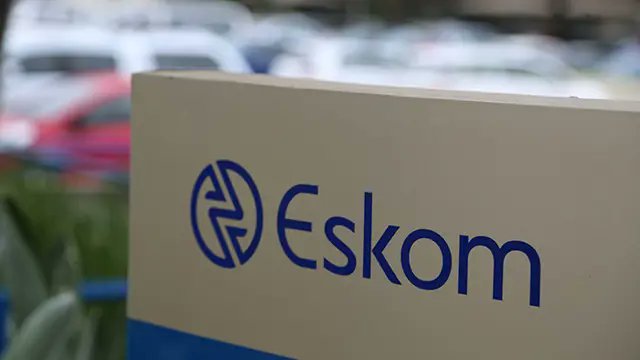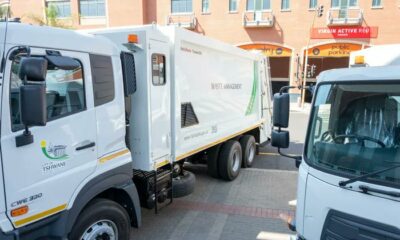News
South African Cities Warned of New Electricity Price Hikes as Nersa Enforces Tougher Rules

Lights, Bills, Action: South African Towns Brace for New Electricity Tariff Shake-Up
Nersa orders municipalities to submit next year’s tariff plans and a High Court ruling means there’s no room for shortcuts.
A New Round of Electricity Increases Is Coming, But This Time, the Rules Have Changed
South Africans have barely recovered from the last round of electricity price hikes, and already another wave is on the horizon. This week, the National Energy Regulator of South Africa (Nersa) warned that all licensed municipalities and private distributors must submit their 2026/27 tariff applications by 12 December 2025 and they had better come prepared.
For years, residents across Johannesburg, Tshwane, eThekwini and smaller municipalities from Mahikeng to Makhanda have complained about rising electricity costs that often feel arbitrary. Now, a High Court ruling has forced Nersa to tidy up its process. In short: no proper paperwork, no tariff increase.
Municipalities Ordered to Produce Cost-of-Supply Studies
In its notice, Nersa made it clear that tariff applications must be accompanied by full cost-of-supply studies, the technical reports that explain how much it actually costs each municipality to deliver electricity to households and businesses.
Municipalities that fail to provide these studies or miss the 12 December deadline will not be allowed to raise tariffs in the 2026/27 financial year, starting 1 July 2026.
The regulator also emphasised that:
-
it will reject incomplete or late applications, and
-
all applications will be published for public comment for 30 days.
For communities long frustrated by opaque billing and sudden price jumps, this is a rare moment of accountability.
A Process Rebuilt by the Courts
This entire shake-up stems from a landmark case brought by civil group AfriForum against Nersa earlier this year. The Pretoria High Court, after hearing arguments in August, found that Nersa’s past tariff approvals were unconstitutional because they were granted without proper cost-of-supply studies and without meaningful public participation.
Judge Etienne Labuschagne didn’t mince his words. When Nersa tried to argue that cost studies were “confidential” and “too technical” for ordinary consumers, he fired back: how can the public be expected to participate if the key information is kept secret?
Nersa had no convincing answer.
On 31 October 2025, the High Court ruled in AfriForum’s favour with costs.
The court ordered that:
-
Eskom’s municipal wholesale prices must be announced by 31 January 2026.
-
Municipalities must submit their final tariff proposals by March 2026.
-
Nersa must issue its final decisions by 5 May 2026.
These deadlines are designed to ensure proper public participation. And for once, civil society is celebrating a clear win.
Public Reaction: Relief Mixed With Skepticism
On social media, the reaction has been mixed.
Under posts shared by energy analysts, users on X (Twitter) quipped:
-
“At last, transparency! But let’s see if municipalities actually meet the deadline.”
-
“Nersa only listens when the courts force them. Typical.”
-
“Tariffs still going up though… fixing the process doesn’t fix the price.”
Others welcomed the court’s decision as a rare victory for consumers in a sector dominated by crisis headlines from load shedding to municipal mismanagement.
Why This Matters: A System Under Pressure
For years, electricity tariffs have climbed faster than inflation. Many municipalities rely heavily on electricity sales to fund other services, a practice criticised by economists but entrenched in local budgets.
The lack of proper cost studies created space for:
-
inflated markups
-
cross-subsidisation without transparency
-
and irregular hikes that hit households hardest
This ruling forces the system to confront its own weaknesses.
Still Provisional, But A Turning Point
While Judge Labuschagne’s ruling is provisional pending a rule nisi hearing on 18 November 2025, the constitutional finding stands.
All 158 affected municipalities have been invited to justify why the new timelines shouldn’t become permanent, but observers believe the chances of overturning them are slim.
The message from the bench was clear:
South Africans deserve transparency in how electricity prices are determined.
What Happens Next?
Municipalities now face a tight deadline. Cost-of-supply studies are lengthy, technical and expensive, some smaller municipalities simply don’t have the expertise or budget to produce them quickly.
If many fail to meet the requirements, the country could face an unusual scenario:
a year with no municipal tariff increases.
For cash-strapped households, that would be a welcome break. For municipalities already struggling to balance their books, it could be a financial cliff.
South Africa’s complicated electricity puzzle continues, but at least, this time, the public gets a front-row seat.
{Source: My Broad Band}
Follow Joburg ETC on Facebook, Twitter , TikTok and Instagram
For more News in Johannesburg, visit joburgetc.com


























